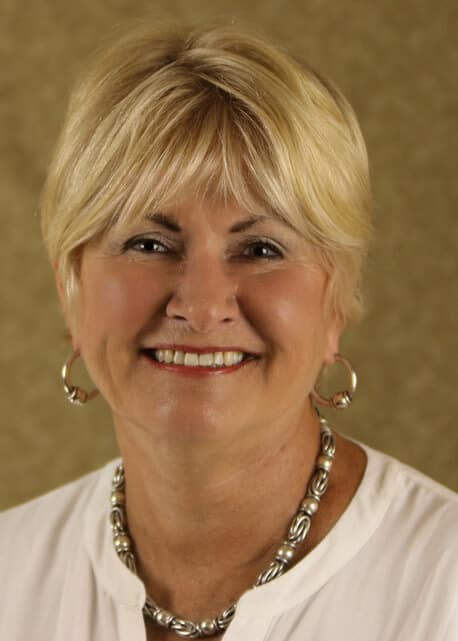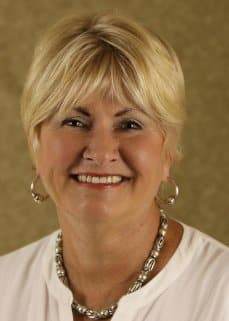Interview with Hound Group Judge Debra Thornton
I have been breeding dogs for 46 years and judging for 21 years. I am an AKC Judge, currently licensed to judge the Working Group, Hound Group, Terrier Group, Sporting Group, and part of the Non-Sporting Group, including BIS and the Miscellaneous Breeds. I also judge a few Toy Breeds as well as my new breed, Pumik.
In 1983, I acquired my first Newfoundland while living in Salinas, California. Over the years, I have bred over 100 champions and a large number of nationally known dogs. I bred GCh. Cypress Bay’s Big Sur who won the 2015 Newfoundland Club of America’s National Specialty. He was also the No. 1 Newf in the US in 2014, winning several BISs, and was the No. 9 Working Dog. The year 2016 brought another big honor as Int’l. Ch. Cypress Bay’s The One That I Want For Bear N Mind (Danny) took the breed at Crufts and garnered a Group 3. I also bred and co-owned Ch. Cypress Bay’s See Sea Baby ROM. “Baby” won the Newfoundland National Specialty Show in California in March of 2005. She was also a BIS bitch. She won the breed at the prestigious Westminster Dog Show under breeder-judge Mr. David Helming in 2006. I also bred Ch. Cypress Bay Can Do Cassandra ROM. “Cassie” took BOS at the 1993 and 1994 National Specialty. Her children went on to honor her, including Ch. Cypress Bay Pouch Cove Chest’r (BOS at 1996 National Specialty), Ch. Cypress Bay Dai of Summer ROM (First Select at 1995 National Specialty), and GCh. Cypress Bay JL Snazzy Story at Avalon Bey (Select at the 2011 and No. 1 Newfoundland in 2012).
The year 2011 ended with two of my dogs among the top three Newfs. GCh. Cypress Bay’s Don Juan DeMarco took the top honor as No. 1 show dog, and “Snazzy” was named No. 3. GCh. Cypress Bay’s JL Snazzy Story at Avalon Bey, co-owned and bred by myself, won the breed at Westminster in 2012 and he also took his first BIS.
While continuing to establish my breeding program with the Newfoundland, I became involved with the Portuguese Water Dog. I bred several litters and finished many of my dogs. This was an excellent experience that gave me firsthand insight into this wonderful breed. In 2012, I saw a new breed while at The National Dog Show. Another adventure started when I obtained my first Pumik. I now have three of them and enjoy working with this new AKC breed.
I reside with my husband, Marv, in Rincon, Georgia. I am the past President of the Charlottesville-Albemarle Kennel Club and past Treasurer of the Hatboro Dog Club in Hatboro, Pennsylvania. I am currently a Board Member of the Savannah Kennel Club and VP of the Magnolia Pumi Club. I am also the Founder of the Animal Care Association of Mexico. This organization rescues and neuters street animals and educates the good people of Acapulco of this growing problem. It is the first organization of its kind in Mexico.
Where do I live? How many years in dogs? How many years as a judge?
Debra Thornton: Hello from the South! Three years ago, we moved from Virginia to the Savannah area. I now consider myself a “Southern Peach.”
What is my original breed? What is/was my kennel name?
Debra Thornton: As noted above, my original breed was the Newfoundland. It was a love story, having seen them at a dog show when I was 11 years old. I was an adult before obtaining my first Newf. The year was 1985, and I was “off and running.” Cypress Bay was my kennel name and we had over 100 champions under that prefix.
Can I list a few of the notable dogs I’ve bred? Any performance or parent club titles?
Debra Thornton: My accomplishments include winning Best in Show twice at our Newfoundland National, winning many Specialties and Breeds at Westminster, and breeding many successful dogs. I think my most important accomplishment, though, is introducing these wonderful dogs to so many families. I hear from them even today.
Have I judged any Hound Breed/Group Specialties?
Debra Thornton: After many years showing my dogs, the itch to judge Newfoundlands hit me hard. In 1999, I applied for my one and only breed. The year 2000 saw my first judging assignments. The rest was an addiction to learn about many new breeds. Judging became my passion. After the Working Group, I promptly decided to venture into the Hounds.
Hounds are, first and foremost, hunters. How does this inform my decision-making in the show ring?
Debra Thornton: The Hound Group brought a new dimension to my judging. I loved going on night hunts and learning just how the Scenthounds use their noses in addition to their ability to run through rough terrain. We were able to go to a large Hound kennel followed by a night hunt. This made a huge impression on me. The August ADSJ seminars were helpful in that we not only had class all day, we were also together at night, sharing information and experiences.
How important are breed hallmarks in the Sighthounds? In the Scenthounds? In the “Primitive” Hounds?
Debra Thornton: Going to specialties and learning from my mentors helped me. The diversity of the Hound Group is amazing. There are Sighthounds that are elegant and seem to float around the ring. These Hounds are some of the oldest canine breeds. These Hounds are fast and have long legs. The Hounds have deep chests and move with purpose. These Hounds have prey drive. They have such different ways to catch or corner their prey. Some of the Scenthounds hunt alone and others work in a pack. It is important to know the differences between the Sighthounds and Scenthounds by how they hunt and by their breed hallmarks. The double suspension is particular to the Sighthounds. The form is attributed to the flexible back, good tuck up, and length of the back. They all need good feet. The “primitive breeds” need to be understood. (I was blessed to judge the Pharaoh Hound National at Purina Farms.) There are many views on them, so talk to many breeders and make your own conclusion.
Would I have any advice to impart to newer judges of the Hound Breeds who come from other Groups?
Debra Thornton: The Hound Group is a strong Group. Many choices and breeds of dogs reside there. I came from, as you know, a Working Breed and moved into the Hound Group. There are many different types of Hounds, from Wolfhounds to Dachshunds, and many in between. Look for breed type and movement that is correct for each particular breed. Where does the Basenji belong? Are wrinkles important or not? The Ridgeback? Many dogs use both scent and sight. Again, learn the differences between the Hounds.
When it comes to Group and Best in Show competition, do Hounds have a “leg up” or a liability? (Think Westminster.)
Debra Thornton: Do I think Hounds have an advantage in winning BIS? No, I think the judge looks at each individual dog and considers which is the best dog on that day. Other factors also come into play, such as a dog that the judge may love but doesn’t take a Group One.
If I could share my life with only one Hound Breed, which would it be and why?
Debra Thornton: I have to say that I have owned only one breed in the Hound Group. Many people don’t know this, but I loved and was loved by two Irish Wolfhounds that came from Sam Ewing. He was a well-known breeder of the Wolfhound and I enjoyed loving them. Sometimes it is hard to evaluate them, as they bring back so many memories.
Just for laughs, do I have a funny story that I can share about my experiences judging the Hound Group?
Debra Thornton: While the singing of the National Anthem was taking place before a show, I had a Redbone Coonhound just outside my ring. I will tell you that I have never enjoyed it more—with a person and a dog singing in perfect harmony (at least to me).









